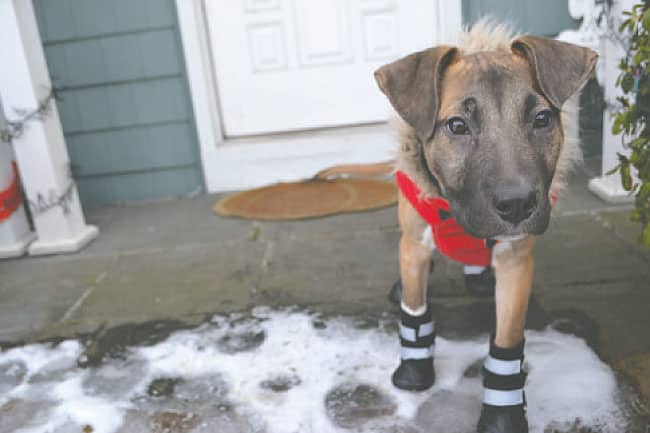
As winter tightens its grip across the northeast, staying safe and warm is a foremost priority. Humans protect themselves by bundling up in heavy down coats and waterproof boots, but pets require special care when the bitter cold settles in. Temperatures below freezing along with wind chill can prove deadly for domesticated pets.
The Animal Humane Society suggests taking these precautions to keep them safe this winter:
Indoor pet tips
- Don’t keep pets outside for an extended period of time. During severe weather, dogs should be let out only to relieve themselves. Cats should be kept indoors at all times.
- Remove ice, salt and caked mud from your pet’s paws and coat immediately.
- Before walks, put Vaseline or doggie shoes on your dogs’ paws to protect against potentially harmful sidewalk salt and chemicals. Wipe the Vaseline off when back inside.
- Make sure your pet’s bed is not on the floor in a cold or drafty area of your home.
- Indoor dogs typically receive less exercise during cold weather and therefore may require fewer calories. Feed them smaller portions to avoid unhealthy weight gain.
- Skip excess bathing. Washing too often can remove essential oils and increase the chance of developing dry, flaky skin. If your pooch must be bathed, ask your vet to recommend a moisturizing shampoo and/or rinse.
- Make sure to dress short-haired dogs in outdoor jackets.
Outdoor pet tips
In New York State, it’s against the law to leave pets unprotected in dangerous weather conditions. Leaving animals inside vehicles during extreme weather is also illegal and an animal control officer is allowed to remove any animal from what they deem to be unsafe conditions in cold or hot climates.
Outdoor pets typically need more food in cold weather because they must burn more calories to keep warm.
Check for frostbite, especially on paws and ears.
- Make sure your pet’s water is never frozen.
- Keep an eye out for and clean up all antifreeze spills. One lick of the sweet-tasting fluid can be fatal to an animal.
- Cats have been known to climb onto vehicle engines for warmth. Knock on the hood of your car before starting the engine if you suspect your cat could be inside.
- Watch for signs of hypothermia: weak pulse, dilated pupils, decreased heart rate, extreme shivering, pale or blue mucous membranes, body temperature below 95 degrees, stupor and unconsciousness. Symptoms of extreme hypothermia may include neurological problems, including coma, heart problems and kidney failure.
If you have additional questions or concerns about how to care for your pet in subzero temperatures, check with your veterinarian. Visit www.animalhumanesociety.org additional safety tips.
—Additional information provided by Animal Humane Society


















